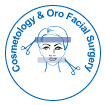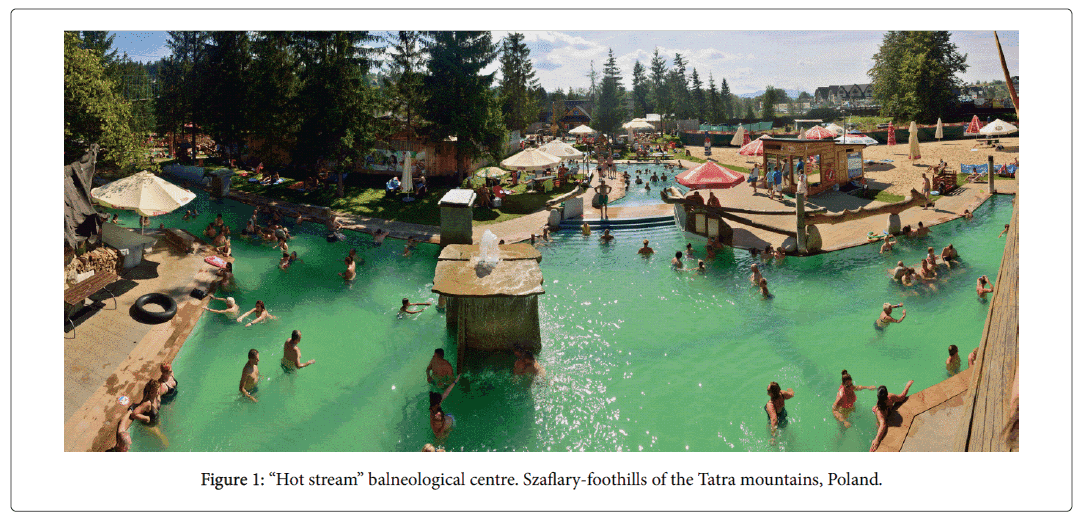Use of Minerals as Ingredients in Cosmetics
Received: 09-Feb-2018 / Accepted Date: 19-Feb-2018 / Published Date: 23-Feb-2018
Keywords: Minerals; Cosmetology; Exfoliation; Dipeptides; Skin healing
Short Communication
For millennium, minerals have been used in medicines and cosmetics, alone or in mixtures. Currently, many medicinal or cosmetic products are based on minerals such as smectite (smecta), kaolinite, sulphur, halite, sylvite, kieserite, talc and many others. The relation of food with therapeutic products is examined [1] as well as the relation of chemistry with cosmetology [2] which is found to be interesting and important [3]. Selected minerals give mineral-based products having various properties that can be beneficial for the body, e.g. they can act as disinfectants, astringent, provide microelements, etc. Relation external-internal minerals are important for health and functioning of organism [4-20]. They are successfully used not only in pharmacy, but also in therapeutic mud baths, brine baths, mud treatments, and others [21].
Certain natural multiphase cosmetics containing a composition of natural gel are known from the patents. One of those is Belamcanda chinensis extract- where a highly viscous emulsion (constituting the second phase) is suspended in a natural gelling substance made from thickeners, particularly in gelatin, xanthan gum and sucrose esters used in amounts of 50.0%, 30.0% and 20.0% respectively, which form the first phase, used in an amount of 5%. The emulsion is composed of at least 2% of Belamcanda chinensis root extract as well as isohexadecane in an amount of 4%-5%, ethylhexyl stearate 6%-8%, decyl oleate 4%-6%, sorbitan oleate and polyglycerolate-3- polyrrinooleate 4%-5%, sucrose polystyrene 1%, fragrance composition in the amount of 0.2%, preservative in the amount of 1%, and water. The gel fraction is preserved with a mixture of sorbic acid, benzyl alcohol and sodium benzoate added in an amount of 2% [22].
There are cosmetics known from a Polish patent application (P. 352701) which are used in a care and slimming treatment. Such a cosmetic is in the form of a moisturizing and nourishing cream with a body sculpting and slimming effect. It contains ginger root extract, a peat-mineral preparation, so-called "borowina" and a moisturizing and nourishing cosmetic cream with anti-cellulite effect. Other patent specifications (PL205842) describe a powder formulation for curative, prophylactic and cosmetic treatments performed by a blastingexfoliation method. The formulation contains exfoliating and remineralising substances, where the exfoliating agent equals 50%-70% of the composition and where powdered aluminum hydroxide, aluminum oxide, or sodium bicarbonate are used as the exfoliating substances. The powdered hydroxyapatite is a mixture of hydroxyapatite with calcium fluoride, or fluorapatite which are used as the remineralising agents.
Another known composition (Pl413379) contains a complex of amino acids, dipeptides and minerals in a phospholipid carrier. Optionally, it may also contain auxiliary components, such as amino acids selected from the group consisting of ornithine, glycine, histidine, lysine and their salts. Dipeptides from the group containing carnosine and its salts can also be used, while the mineral components in this cosmetic are compounds of calcium, magnesium, copper, and manganese. The added phospholipids are selected from the group containing lecithin [23,24]. In the cosmetic preparations known to date minerals have been used, but only in mixtures with various types of organic substances, such as glycerol, fats and others. However, no purely mineral cosmetic preparations are known, i.e. based solely on natural minerals, without the mentioned organic admixtures. The cosmetics described in this article are based solely on mineral compositions and geothermal water enriched in a natural way with certain elements, especially potassium. The approximate composition of the thermal water used for the synthesis of mineral cosmetics is given in Table 1.
The essence of the developed cosmetic preparations is a mixture of thermal water and natural minerals or a mixture of natural minerals, selected from: hematite, sulfur, smectite, gypsum, dolomite, halite. The proportions of the individual components in the mixture are such that for 600 ml of thermal water there is up to 100 g hematite and/or up to 100 g of sulfur and/or up to 500 g of smectite and/or up to 300 g of gypsum and/or up to 300 g of dolomite and/or up to 300 g of halite, with a total of up to 350 g of minerals per 600 ml of thermal water. A mineral cosmetic preparation may also contain the addition of peat in an amount no greater than 500 g per 600 ml of thermal water, with no more than 850 g of added minerals and peat overall per 600 ml of thermal water. Peat is acidic; it contains natural organic acids that change the pH of skin to acidic, causing its disinfection, elimination of eczema and other skin infections. In combination with the added minerals, it clears the skin of microorganisms and promotes skin healing. Mineral cosmetic preparations may also contain an addition of up to 100 g of natural honey per 600 ml of thermal water, with no more than 950 g of added minerals and honey for 600 ml of thermal water. Honey helps directly by supplying polysaccharides to skin cells, improving their metabolism and turgor. It is a natural organic ingredient used only in certain cosmetics.
The advantage of mineral cosmetics is the fact that they are natural and in suggested proportions, they are harmless. Cosmetics with geothermal mineral water, when properly applied, have a beneficial effect on the skin, but also, through percutaneous absorption, on the whole body, due to the significant amount of elements necessary for proper functioning of organs and tissues. They are easily washed off with water and their effect occurs mainly at the time when they are on the skin. Due to percutaneous absorption, elements absorbed from minerals are transported through the circulatory system and distributed throughout the body. Those cosmetics will be used in a beauty salon in the Balneological Geothermal Center "Hot stream" in Szaflary, located at the foothills of the Polish Tatra Mountains (Figure 1).
Details of the cosmetics formulas are protected by patent application P.422551 entitled “Mineral cosmetic preparation”. Those cosmetics are currently in the approval phase. After their positive evaluation, they will be used in selected beauty salons.
References
- Scicchitano P, Cameli M, Maiello M, Modesti AP, Muiesan LM, et al. (2014) Nutraceuticals & dyslipidaemia: Beyond the common therapeutics. J Funct Foods 6: 11-31.
- Kozminska A (2011) Medical cosmetics outline (Sketch of medical cosmetology) PZWL, Warszawa.
- Pawlikowski M (1987) Mineralization of human living organism. Prace Mineral 79: 121-125.
- Pawlikowski M (1991) Mineralization of gallblader. W: Biomineralizacja i biomaterialy. PWN Warszawa pp: 84-92.
- Pawlikowski M (1991) Cancer mineralization. W: Biomineralizacja i biomaterialy. PWN Warszawa pp: 848-902.
- Pawlikowski M (1995) Secret of tissue mineralization. PAN Krak ow 2: 97p. Â Â Â Â Â Â
- Pawlikowski M (1999) Preliminary results of dissolution of substances mineralizing human arteries. Arch. Mineralog, 52: 195-210.
- Pawlikowski M, Pfitzner R (2012) Mineralization of human carotids. Acta Angiol 18: 23-34.
- Pawlikowski M, Niedzwiedzki T (2002) Mineralogy of bones. Wyd. PAN Oddzial w Krakowie pp: 128.
- Pawlikowski M (2003) Minerals in human blood vessels & their dissolution in vitro. Geology & health: Closing the gap 9: 155-158
- Pawlikowski M (2011) Biomineralization of cancer tissues. 20th Int. Symp. Molecular & physiological aspects of regulatory processes of the organism. Cracow. Ed. H. Lach. Wyd Abaton Krakow 5: 190-191.
- Pawlikowski M (2013) Mineralization of lung cancer tumors. Auxiliary sciences in archaeology, preservation of relicts & environmental engineering 15: 1-34.
- Pawlikowski M (2014) Osteoporosis as a source of tissue mineralization. Research on osteoporosis therapy & dissolution of arterial mineralization. J Life Science 8: 610-625.
- Pawlikowski M (2016) Bio-mineralogy of urinary & gall-bladder stones. Scientific Publishing House Krak 2: 53-60.
- Pawlikowski M (2017) Biomineralogy of angiogenesis. Archives of Clinical and Biomedical Research 1: 161-167.
- Pawlikowski M, Miler M (2017) Bio-mineralogy of selected skin cancers. J Carcinogene Mutagene 8: 307-310.
- Pawlikowski M (2017) Biomineralogy of angiogenesis. Arch Clin Biomed Res 1: 161-167.
- Pawlikowski M (2017) Centers of human tissue biomineralization (calcification). Cardiol Cardiovasc Med 1: 252-261.
- Pichler I (1981) Laboratory of cosmetic chemistry. Wyd. Sp oldzielcze. Warszawa.
- Ricapito M (2006) Is it really healthily, prettier, better-The dirt on the mineral make-up craze. Women's Health 5: 111p.
- Rogers NE, Avram MR (2008) Medical treatments for male & female pattern hair loss. J Am Acad Dermatol 4: 547-566.
- Sarbak Z, Jachymska-Sarbak B, Sarbak A (2013) Chemistry in cosmetics & cosmetology. MedPharm Polska.
Citation: Pawlikowski M, Hreska M (2018) Use of Minerals as Ingredients in Cosmetics. Cosmetol & Oro Facial Surg 4: 126.
Copyright: © 2018 Pawlikowski M, et al. This is an open-access article distributed under the terms of the Creative Commons Attribution License, which permits unrestricted use, distribution, and reproduction in any medium, provided the original author and source are credited.
Share This Article
Open Access Journals
Article Usage
- Total views: 16458
- [From(publication date): 0-2018 - Apr 07, 2025]
- Breakdown by view type
- HTML page views: 15490
- PDF downloads: 968

